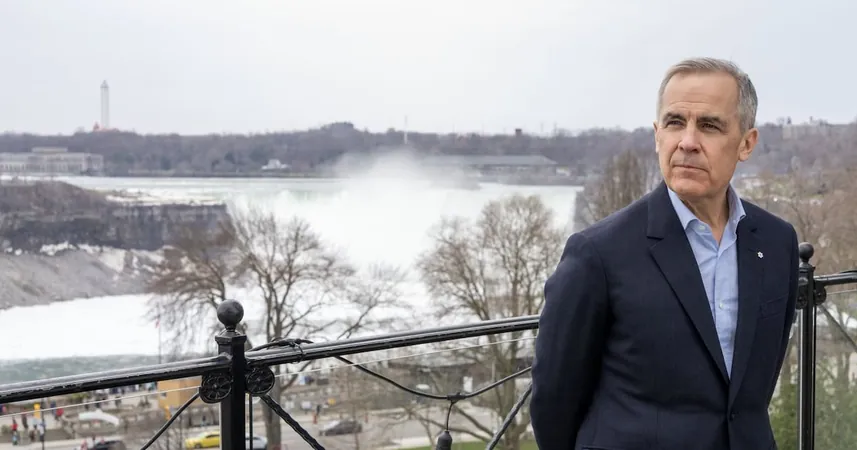
The Historic Return of Vanguard 1: The World’s Oldest Satellite Could Make Its Homecoming After 67 Years
2025-04-12
Author: William
A Pioneering Journey Through Space
Imagine a satellite that has been orbiting Earth for 67 years. Launched in 1958, Vanguard 1 silently travels through space as the oldest human-made object still in orbit. Now, a dedicated team of scientists and aerospace historians has hatched a daring plan to retrieve this iconic relic and bring it back home. If successful, this would mark the first time in history that a spacecraft so deeply entrenched in orbit is recovered.
A Symbol of Triumph in the Space Race
Vanguard 1's journey began on March 17, 1958, just after the Soviet Union launched Sputnik 1, igniting the global Space Race. Following an earlier launch failure nicknamed “Kaputnik,” the successful deployment of Vanguard 1 restored American pride during a tense era. At a mere 3 pounds, it also made history as the first satellite to utilize solar power, showcasing groundbreaking photovoltaic technology.
A Scientific Treasure from Space
Although it became silent in 1964, Vanguard 1 has maintained its relentless orbit, soaring between 410 and 2,375 miles above the Earth. The satellite's longevity now captivates scientists eager to study its condition after decades of exposure to the harsh environments of space. With the prospect of unique insights into the effects of micrometeorites and space radiation, researchers are keenly interested in its potential return.
A Bold Proposal Takes Shape
A new initiative led by aerospace analyst Matt Bille outlines an ambitious recovery mission, not yet officially endorsed by any space agency but gaining traction in the scientific community. "We hope to pave the way for future endeavors," Bille states, emphasizing the mission's historical and scientific significance.
The Mission Tactics Explained
The recovery plan involves two main phases: First, a mission will approach Vanguard 1 to photograph and assess its condition, followed by a potential capture and return to Earth, possibly via the International Space Station. Should this mission succeed, Vanguard 1 might find its final resting place at the Smithsonian’s National Air and Space Museum, connecting generations to the origins of space exploration.
Unveiling the Effects of Time
What makes Vanguard 1 particularly intriguing is its status as a scientific time capsule. After decades of exposure to space conditions, the satellite’s materials could provide invaluable data on degradation due to prolonged space residency. With insights into solar cell performance and structural integrity, this mission could open new doors in aerospace technology.
Funding the Dream
While enthusiasm grows, the mission is currently seeking financial backing. Experts believe it may require funding from a wealthy individual with a passion for space history, akin to figures like SpaceX's Jared Isaacman or Jeff Bezos, who has previously financed recovery projects.
The Quest for Precision
The recovery mission poses formidable challenges. With Vanguard 1 measuring roughly 91 centimeters across, pinpoint precision will be critical during any encounter to avoid harming this fragile artifact of space history.
A Legacy in the Making
Despite these obstacles, the quest to retrieve Vanguard 1 embodies a fusion of science, history, and respect for the pioneers of space exploration. The dream of bringing home this unparalleled relic lives on, promising to enrich our understanding of the enormity of space and the resilience of our technological endeavors.









 Brasil (PT)
Brasil (PT)
 Canada (EN)
Canada (EN)
 Chile (ES)
Chile (ES)
 Česko (CS)
Česko (CS)
 대한민국 (KO)
대한민국 (KO)
 España (ES)
España (ES)
 France (FR)
France (FR)
 Hong Kong (EN)
Hong Kong (EN)
 Italia (IT)
Italia (IT)
 日本 (JA)
日本 (JA)
 Magyarország (HU)
Magyarország (HU)
 Norge (NO)
Norge (NO)
 Polska (PL)
Polska (PL)
 Schweiz (DE)
Schweiz (DE)
 Singapore (EN)
Singapore (EN)
 Sverige (SV)
Sverige (SV)
 Suomi (FI)
Suomi (FI)
 Türkiye (TR)
Türkiye (TR)
 الإمارات العربية المتحدة (AR)
الإمارات العربية المتحدة (AR)